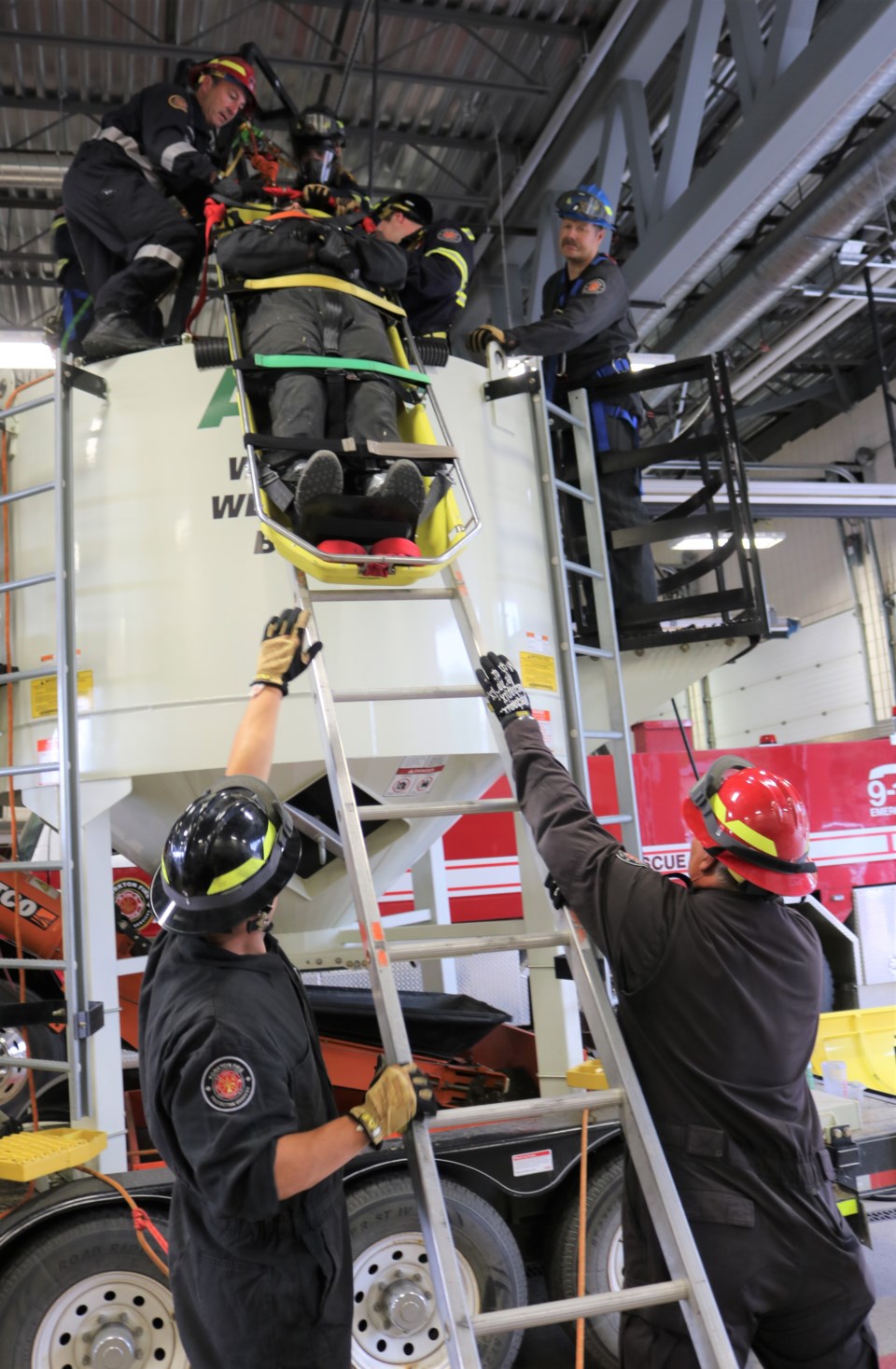YORKTON -Rescuing someone who has been submerged in grain -- whether in a truck box, or a grain bin -- requires some very specific procedures to ensure a safe extraction.
Members of the Yorkton Fire Protective Services received training in the procedures required Wednesday at the Fire Hall.
“It’s grain rescue training and entrapment training,” explained Fire Chief Trevor Morrissey, adding the procedures are generally the same whether it is a situation where a person has been submerged in a bin, or in a truck.
While the training Wednesday only involved a dozen Yorkton staff, Morrissey said he hopes they can “bring it (the training) for departments around us.”
However, Morrissey added the specific grain bin rescue work builds on a foundation of other training that must be done first, including rope rescue and confined space rescue. He said such prior training is basically a prerequisite to what they were learning.
The ‘mini-bin’ brought in for the session was filled with actual canola, with a participant acting as a ‘victim’ for a hands-on rescue after more than a day’s worth of classroom study.
“Canola is a specific one that is a challenge for us right now,” said Morrissey, adding while they have some metal shielding which is used to build a sort of ‘well crib’ around a victim they can then auger the grain away inside it, it is more suited to corn. He said ideally they will add gear that better suits when dealing with crops such as canola and flax, both small-seeded, and high in oil making them essentially slippery.
While the training is specific to a certain need, Morrissey said it is important to be ready because when called the situation is usually life-threatening, adding they have been on three bin accident calls and sadly in each case the trapped person died.
Even when someone is safely extracted, the needing for proper training does not end, noted Morrissey. He said because of the pressures exerted on the body there can be a build-up of lactic acid in the body causing essentially the ‘bends’ that affect deep water divers. So it is important to handle the injured person correctly, for example having the stretcher lowered feet first to reduce stress on the heart.
The session was part of the ongoing training by the department.



.JPG;w=120;h=80;mode=crop)


